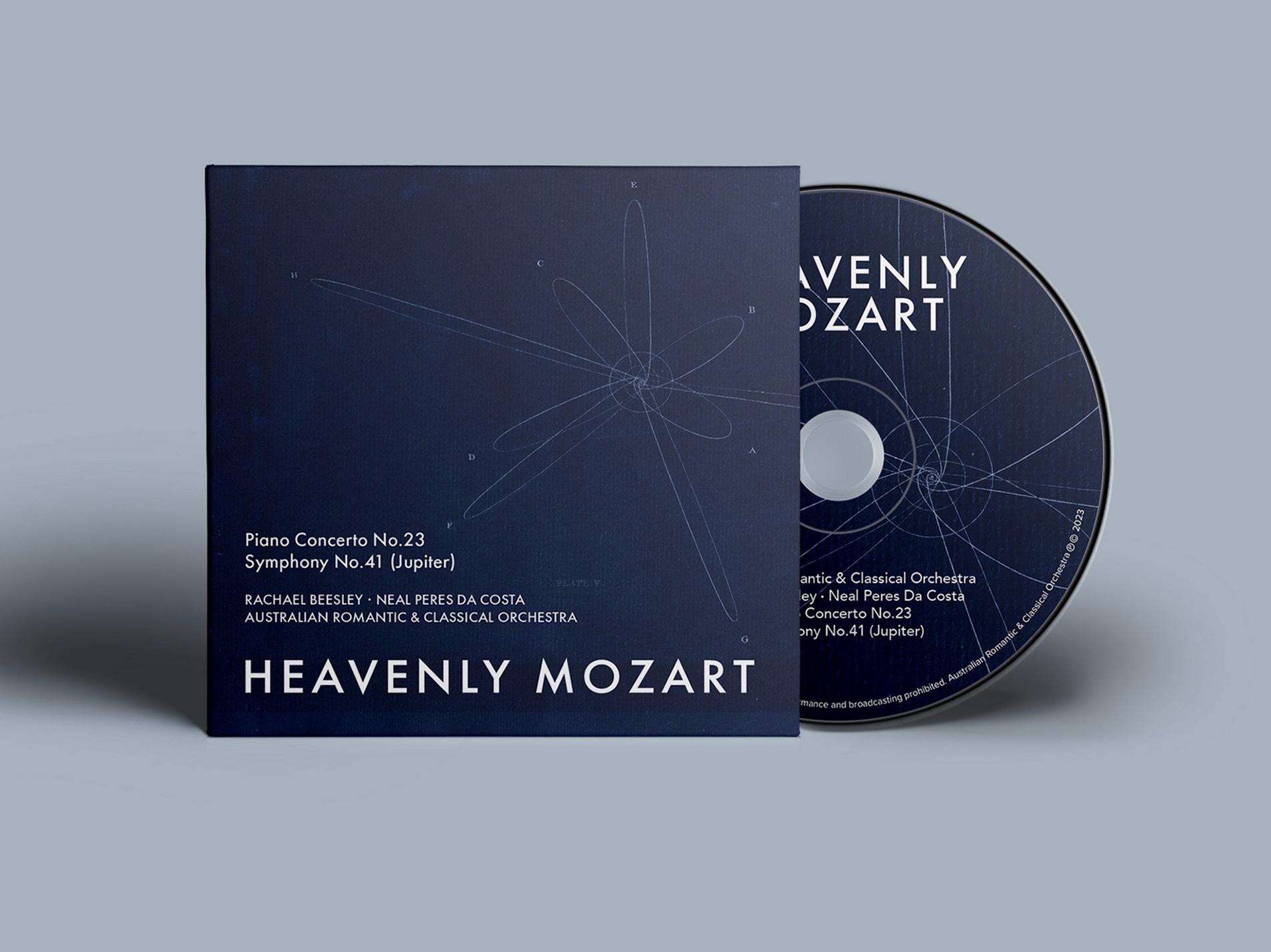This recording, by the Australian Romantic & Classical Orchestra, features two of Mozart’s most popular orchestral works – his Piano Concerto No 23 and the ‘Jupiter’ Symphony. It was recorded in mid-2022 at All Saints Anglican Church, Hunters Hill, with Rachael Beesley on violin as conductor.
The first movement of the piano concerto is played at a rather stately pace. The falling chromatics are synchronised legato among strings and wind, and there is much dynamic contrast. This is all by way of introduction for the star of the piece – Neal Peres Da Costa on fortepiano. In the solos, Da Costa glides deftly between the extremities of the keyboard with ease, and the phrasing is punchy. At times, he enters on the penultimate note with a short improvised introduction. But there is a distracting obsession with articulation. Da Costa challenges us to appreciate a familiar concerto in a new light – informed by an arpeggiated playing style advocated by the likes of Reinecke. Light phrases are performed by Kate Clark on flute, which serve as interludes between the piano solos, and a highlight is the winding dialogues between wind and piano.
A point that can easily go unnoticed is that the Orchestra never overpowers the fortepiano, despite the silvery quiet of the latter. The arpeggios in one of the final solos of the first movement are played with precision and elegance. When the orchestra bursts out again, it is as though it does so in breaths – wavering constantly between loud and soft.
The second movement usually begins with that unmistakably brooding siciliano motif introduced by the fortepiano. But in this rendition, Da Costa bridges the gap between the first and second movements with a tastefully improvised mise en scène. At times, the brusqueness of the bass on the fortepiano is brought out nicely by Da Costa. This is perhaps the only movement by Mozart in F# minor. It is dramatic, almost operatic, in character. This the Orchestra realises by capitalising on slight pauses, and the clarinets, especially, shine here – redolent as they are of the human voice.
In the third and final movement, Jane Gower despatches difficult running passages on bassoon with ease. There is again much articulation by Da Costa on fortepiano when introducing the leading theme of this rondo. The horns are well synchronised, which is no small feat in such a busy movement. In the louder orchestral sections, Da Costa again capitalises on the buzzing effect of the bass strings to give body and a certain percussive effect.
The opening of the Jupiter Symphony is overpowering and spectacular. It catches one by surprise in this recording. The unrelenting bursts that follow are impeccable. We soon find ourselves ensconced in the soundworld of the opera buffa, as the exploration of the motif takes us first to a lilting dialogue between wind and strings and then a stately garden scene marked by a sighing motif. The listener is caught unaware when the Orchestra moves from the entirely genial C major to a devastating C minor chord that is performed fortissimo with the greatest force that one can imagine. The imposing timpani emerges again, and the overall effect of the disruption invokes that most neoclassical of images – Mars and Venus in play. When the disruption emerges again, the effect is compounded by a spectacular series of shimmering tremolos on strings. This movement was the highlight of the recording.
The second movement is marked cantabile. The violins are given a muted effect, but at times the wind and strings take the lead as though in an aria, to lyrically deliver a phrase. The overall effect is a pulsating rhythm. But Mozart’s creative energies are reserved for the renowned fourth movement. In the middle of a symphonic movement in sonata form emerges a densely-packed fugue with five themes taken from the previous movements. But this is music as pleasant as it is learned. Turns are executed on the strings with finesse and dynamic contrasts abound. As with Mozart so we see with the Australian Romantic & Classical Orchestra, that attention to technique and form is but a starting point, albeit an important one, for the exploration of the sublime.
